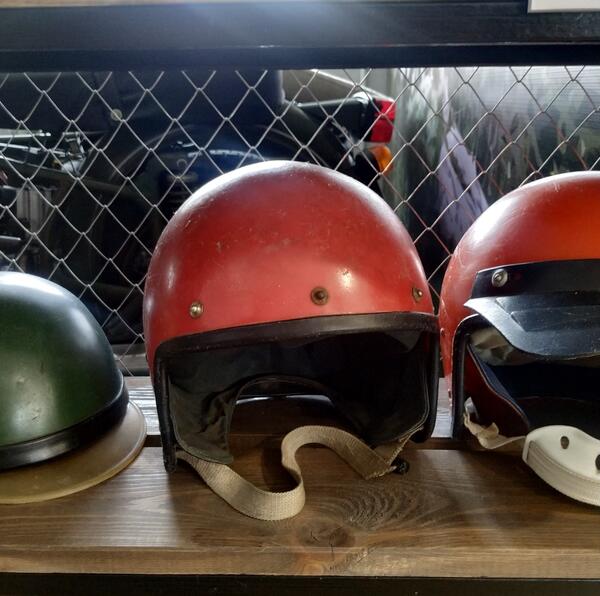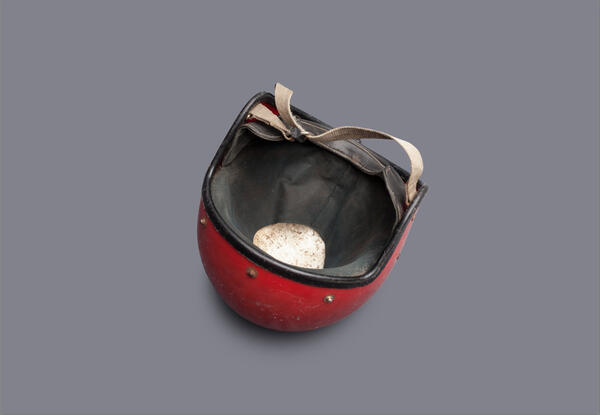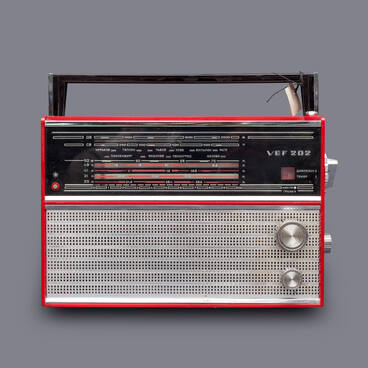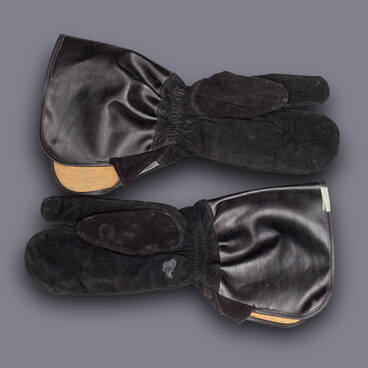The museum collection houses an open face motorcycle helmet designed to protect the head of a motorcycle rider or passenger in case of accident. The minimum guaranteed service life of helmets in the Soviet Union was four years.
Requirements for motorcycle helmets were established by the Soviet national standard GOST 26584-85, “Item 1.3: The weight of the helmet without accessories should not exceed 1 kg. Item 2.2: The prototypes of helmets should be approved by the organizations of the Ministry of Health of the USSR. Item 2.3: The helmet should consist of a shell, an impact-absorbing liner, a fit padding, and a fastening system. Item 2.24: The helmets should maintain their properties at ambient air temperatures between -20 °С and +50 °С and should be resistant to moisture, sunlight, and aging.”
According to Decree of the Council of Ministers of the USSR No. 1092 of November 29, 1967, “On increasing the road safety in cities, other settlements, and on highways”, wearing a helmet when riding a motorcycle or a scooter was made mandatory. From that moment on, bikers had to use a protective helmet.
The mandatory use of helmets was established in the Soviet Union later than in Western Europe and Australia but earlier than in the United States. The introduction of new road safety regulations promoted the mass manufacturing of motorcycle helmets in the USSR. Among other models, there was the so-called “half-helmet”. Apart from motorcycle riders, such helmets were used by paratroopers, mountain climbers, and speleologists. The helmets were made of fiberglass and polystyrene foam and were not strong enough.
The situation improved dramatically in the early 1970s when Soviet enterprises mastered the production of thermoplastic and thermosetting materials. At the same time, the “half-helmets” were discontinued and replaced with “three-quarter” motorcycle helmets. Their name referred to the fact that only a quarter of the head was uncovered.
In the Soviet Union, helmets were produced at the Valmiera Fiberglass factory in Latvia (founded in 1959), and the Tartu Pilot Plant of Plastics in Estonia (presumably, founded in 1918).
Requirements for motorcycle helmets were established by the Soviet national standard GOST 26584-85, “Item 1.3: The weight of the helmet without accessories should not exceed 1 kg. Item 2.2: The prototypes of helmets should be approved by the organizations of the Ministry of Health of the USSR. Item 2.3: The helmet should consist of a shell, an impact-absorbing liner, a fit padding, and a fastening system. Item 2.24: The helmets should maintain their properties at ambient air temperatures between -20 °С and +50 °С and should be resistant to moisture, sunlight, and aging.”
According to Decree of the Council of Ministers of the USSR No. 1092 of November 29, 1967, “On increasing the road safety in cities, other settlements, and on highways”, wearing a helmet when riding a motorcycle or a scooter was made mandatory. From that moment on, bikers had to use a protective helmet.
The mandatory use of helmets was established in the Soviet Union later than in Western Europe and Australia but earlier than in the United States. The introduction of new road safety regulations promoted the mass manufacturing of motorcycle helmets in the USSR. Among other models, there was the so-called “half-helmet”. Apart from motorcycle riders, such helmets were used by paratroopers, mountain climbers, and speleologists. The helmets were made of fiberglass and polystyrene foam and were not strong enough.
The situation improved dramatically in the early 1970s when Soviet enterprises mastered the production of thermoplastic and thermosetting materials. At the same time, the “half-helmets” were discontinued and replaced with “three-quarter” motorcycle helmets. Their name referred to the fact that only a quarter of the head was uncovered.
In the Soviet Union, helmets were produced at the Valmiera Fiberglass factory in Latvia (founded in 1959), and the Tartu Pilot Plant of Plastics in Estonia (presumably, founded in 1918).






